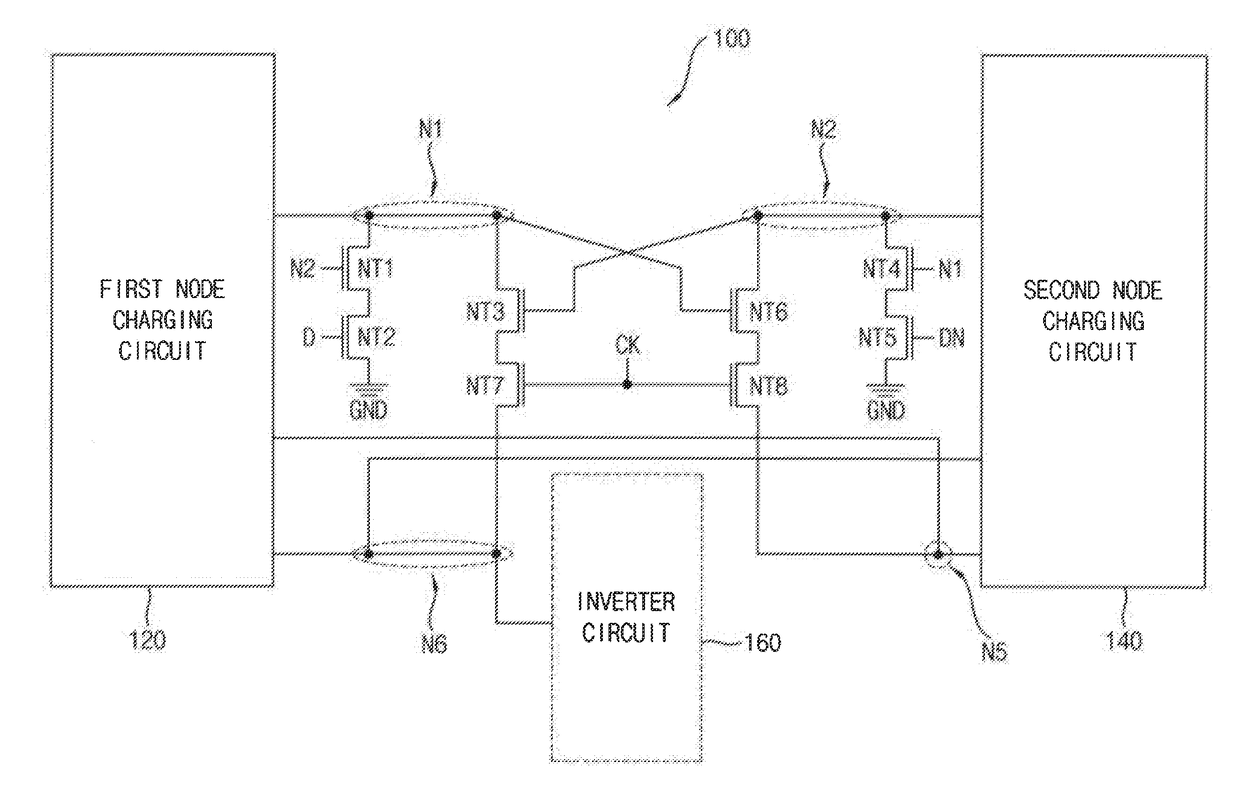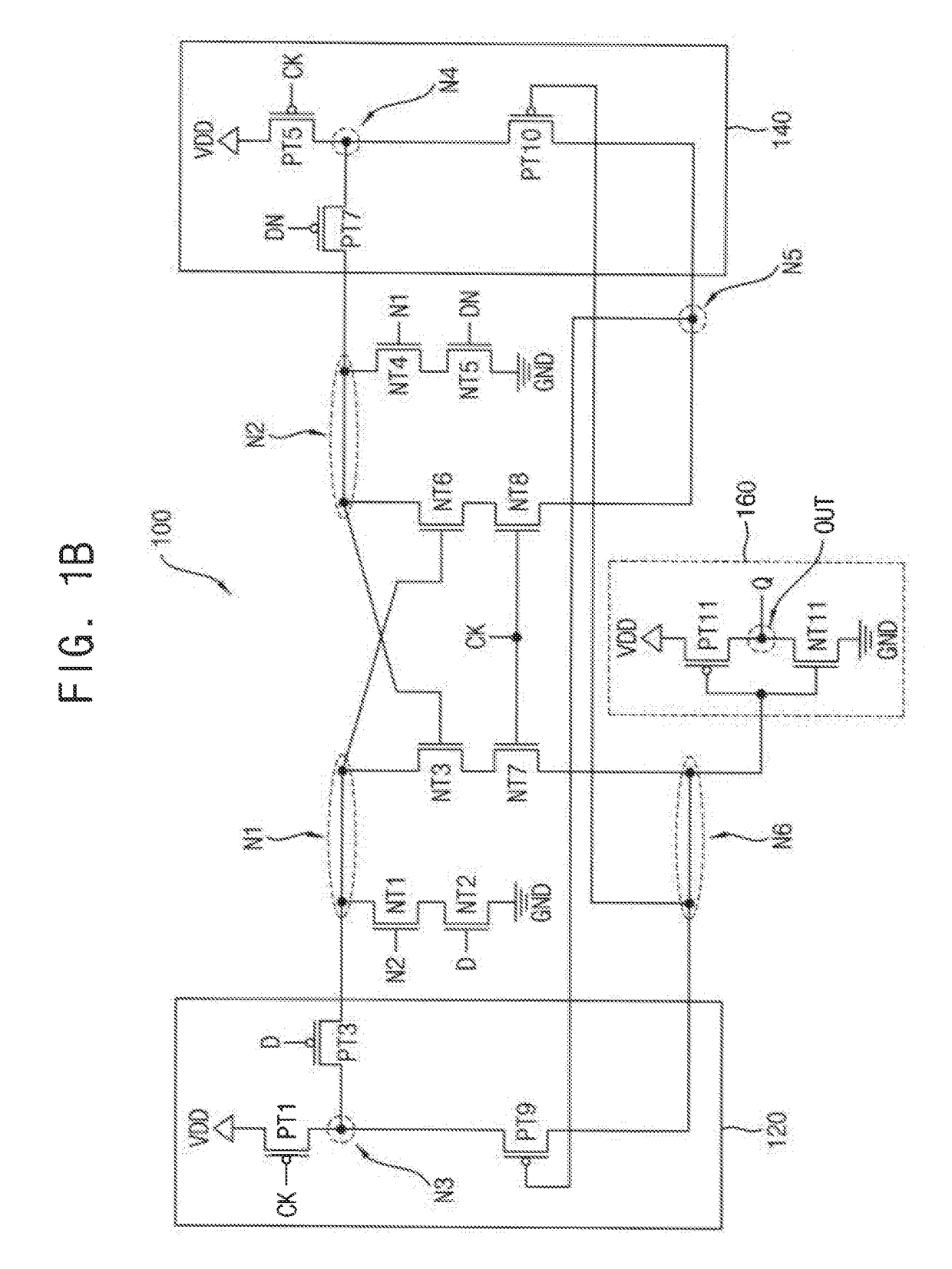Flip-flop
a flip-flop and flip-flop technology, applied in the field of flip-flops, can solve the problems that the conventional master-slave flip-flop cannot meet the low power level, and the conventional master-slave flip-flop consumes power, so as to prevent unnecessary power consumption and low power
- Summary
- Abstract
- Description
- Claims
- Application Information
AI Technical Summary
Benefits of technology
Problems solved by technology
Method used
Image
Examples
Embodiment Construction
[0031]Hereinafter, some example embodiments will be explained in detail with reference to the accompanying drawings.
[0032]FIG. 1A is a circuit diagram illustrating a flip-flop according to some example embodiments. FIG. 1B is a detailed circuit diagram illustrating the flip-flop of FIG. 1A. FIG. 2 is a block diagram illustrating an example in which the flip-flop of FIG. 1B is implemented by logic elements. FIG. 3 is a timing diagram illustrating an example in which the flip-flop of FIG. 1B operates.
[0033]Referring to FIGS. 1A through 3, the flip-flop 100 may include a first node charging circuit 120, a second node charging circuit 140, and first through eighth n-channel metal oxide semiconductor (NMOS) transistors NT1 through NT8. In some example embodiments, the flip-flop 100 may further include an inverter circuit 160. Based on the above structure, the flip-flop 100 may latch input data D at rising edges of a clock signal CK and may output latched input data D as output data Q. In...
PUM
 Login to View More
Login to View More Abstract
Description
Claims
Application Information
 Login to View More
Login to View More - R&D
- Intellectual Property
- Life Sciences
- Materials
- Tech Scout
- Unparalleled Data Quality
- Higher Quality Content
- 60% Fewer Hallucinations
Browse by: Latest US Patents, China's latest patents, Technical Efficacy Thesaurus, Application Domain, Technology Topic, Popular Technical Reports.
© 2025 PatSnap. All rights reserved.Legal|Privacy policy|Modern Slavery Act Transparency Statement|Sitemap|About US| Contact US: help@patsnap.com



